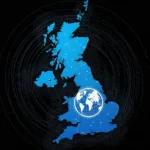In today’s fast-paced digital landscape, your website serves as a crucial storefront. It is often the very first point of contact a potential customer has with your business. You want these visitors to do something specific, don’t you? That’s precisely where highly effective calls to action (CTAs) become indispensable. A meticulously crafted CTA can be the pivotal element that transforms a casual browser into a committed customer. This comprehensive article will delve into both the artistic flair and scientific precision required for creating CTAs that genuinely drive results and significantly boost your website conversions. We will provide practical tips and real-world examples to help you master this essential aspect of digital marketing.
What makes a great Call to Action?
A truly great call to action is far more than just a simple button on a page. It represents a thoughtfully designed interactive element. Its primary purpose is to expertly guide your website visitors along their desired path. Fundamentally, it explicitly tells them what they should do next. Consider it a clear signpost on their digital journey through your site. Furthermore, a successful CTA must always be clear, remarkably concise, and incredibly compelling. It absolutely needs to stand out visually and unequivocally communicate the immediate benefit of clicking. Ultimately, it should eliminate any potential ambiguity regarding the desired action, making the next step obvious and appealing.
Types of Calls to Action (CTAs)
There are numerous distinct types of calls to action, each meticulously designed to serve a unique strategic purpose.
For instance, some CTAs are engineered to facilitate immediate purchases. Common examples include “Buy now” or “Add to Cart.”
Other CTAs strategically focus on the vital process of lead generation. These might include phrases like “Download our free guide,” “Get a Quote,” or “Request a Free Consultation.”
You might also effectively utilise CTAs aimed at fostering deeper engagement, such as “Learn More,” “Watch Video,” or “Explore Our Services.”
The specific type of CTA you select should directly correlate with your overarching marketing goals and the current stage of the customer’s journey. Therefore, always choose the CTA that most precisely aligns with your specific objective.
A case for CTAs?
For call to action buttons, using sentence case (capitalising only the first letter of the first word) is generally preferred for readability and ease of use. While capitalising every word (title case) can sometimes be used for emphasis, it can also make text less readable, especially for those with learning disabilities or poor eyesight.
In general, sentence case is considered more readable and easier for the human brain to process and comprehend. It is more accessible for people with visual impairments and reading difficulties. It is also considered more user-friendly and aligns with some modern design principles.
Conversely, in some cases, all-caps capitalisation on buttons might create a sense of urgency or importance. Additionally, if title case is used elsewhere in a website design already, for consistency it might be considered more appropriate to stick with title case for your calls to action.
Overall, it is usually better to opt for readability and ease of use when considering your calls to action; however, there are some instances when this might not be appropriate and best judgement is required.
Placement and design of CTAs
The strategic placement and thoughtful design of your calls to action are absolutely critical for maximising their overall effectiveness. First and foremost, meticulously consider where your audience’s eyes naturally tend to gravitate on a given page. More often than not, CTAs demonstrate superior performance when positioned ‘above the fold,’ meaning they are immediately visible without any need for scrolling. However, it is also true that sometimes placing them strategically at the logical conclusion of highly relevant content can yield excellent results.
From a visual standpoint, your CTA must unequivocally command attention. Employ contrasting colours that powerfully stand out against your website’s existing background. Ensure that the button’s size is both appropriate and comfortably clickable on all devices, including mobile. Similarly, the intelligent use of negative space surrounding the CTA can significantly enhance its visibility and help it truly “pop” off the page. Remember this: a well-designed CTA is effortlessly easy to spot, instantly understandable, and irresistibly inviting to click.
Crafting compelling CTA copy
The precise words you meticulously choose for your call to action copy hold immense significance. Generic and uninspired phrases such as “Click Here” are almost universally ineffective. Instead, you must wholeheartedly embrace benefit-driven language. Ask yourself: ‘what tangible benefit will the user genuinely gain by clicking this button?’ For example, rather than a bland “Submit,” opt for an enticing “Get your free e-book” or “Unlock exclusive content.”
Employ strong, active verbs that powerfully inspire immediate action. Where appropriate, judiciously create a sense of urgency or exclusivity. For instance, compelling phrases like “Limited Stock —Shop Now” or “Offer Ends Today!” can be remarkably persuasive (as long as they are true: an offer that ends today, in time for a sale to start tomorrow, is no incentive). Always maintain conciseness and clarity in your copy. It should be effortless to scan, conveying its message in mere seconds: a persuasive message increases the likelihood of website conversions.
A/B testing your Calls to Action
A/B testing is a useful practice to optimise your calls to action. You might believe that a particular CTA is flawlessly perfect, yet data often reveals a profoundly different narrative. With A/B testing, you systematically create two distinct versions of your CTA. These versions can vary in numerous aspects: colour scheme, specific copy, strategic placement, or even subtle differences in size. Subsequently, you expose each version to a different, randomly selected segment of your target audience. By tracking the conversion rates associated with each version, you can definitively identify which one performs consistently better.
This continuous, iterative process empowers you to ceaselessly refine and improve your CTAs, thereby significantly boosting your overall website conversions. To deepen your understanding of this powerful methodology, we strongly recommend you read our comprehensive guide on A/B testing for CTAs (coming soon).
Examples of high-converting CTAs
Let’s examine some practical examples of calls to action that consistently demonstrate high conversion rates across various industries.
“Start your free trial” is a time-tested classic, particularly effective for Software as a Service (SaaS) businesses. It offers significant value with a minimal commitment.
“Request a demo” proves highly effective for more intricate products or complex services, as it skilfully invites a deeper, personalised interaction.
“Subscribe to our newsletter” is a proven winner for strategically building a valuable email list and nurturing leads over time.
Furthermore, direct and unambiguous phrases like “Shop Now” for e-commerce platforms or “Book Your Appointment” for service-based businesses are remarkably clear and highly effective.
Each of these successful examples universally focuses on a single, clear action and promises a tangible, desirable benefit to the user.
Remember, the overarching objective is to render it as straightforward as humanly possible for your website visitors to confidently take the precise next step you desire. Systematically optimising your calls to action is an ongoing, dynamic process. It demands meticulous attention to detail, continuous analysis, and an unwavering willingness to experiment through testing. By implementing these proven strategies, you can profoundly improve your website’s overall performance and consistently drive more valuable actions.
For a more comprehensive understanding of effective website development, we encourage you to consult our detailed article, Website development UK: A complete guide for businesses. Additionally, it would be highly beneficial to review Website design that converts: UK best practices, which offers further insights into creating converting digital experiences.
Optimise your calls to action today. Make Redcentaur your trusted partner to help boost your website’s conversions and achieve your business goals.
Further reading about calls to action
Website development UK: A complete guide for businesses
Website design that converts: UK best practices
Calls to Action: A straightforward guide to getting more clicks
A/B testing for Calls to Action (coming soon)





